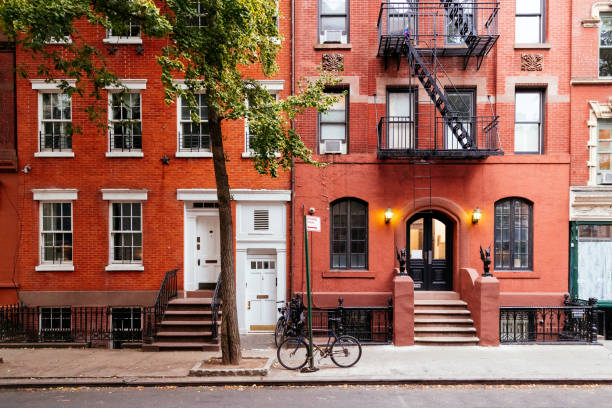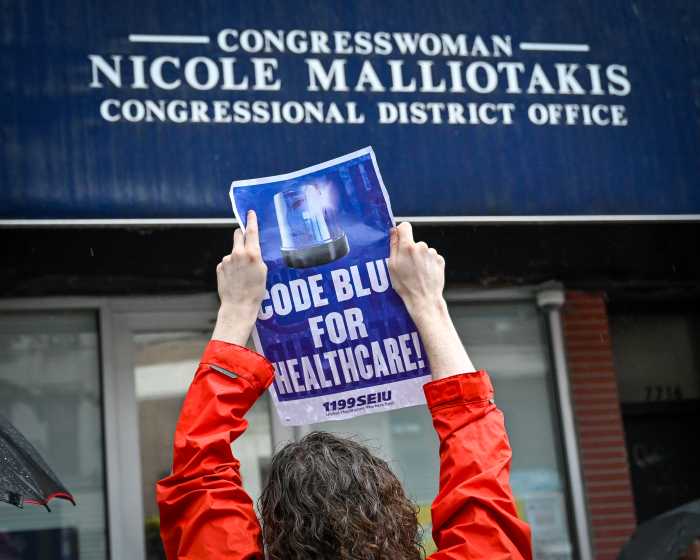By Erica Stein
In the months after Sept. 11, a wide array of organizations sprang up in the wake of the attacks with the purpose of rebuilding – literally, financially, culturally – Lower Manhattan. Over two years later, many of the organizations have folded or largely completed their projects.
Michael Kuo, whose father was killed in the attacks, was formerly a manager for Imagine New York; an organization whose mission to solicit, collect, and transmit the public’s ideas for the World Trade Center site moved through three phases and pretty much ended when it submitted its summary report to the W.T.C. memorial jury at the end of 2003.
Kuo had been involved with Imagine from the very beginning. “It was just something I felt I had to do,” he said of the group founded by the Municipal Art Society. He remembers Imagine “living day to day. It was really hard to get people to give us money, and I felt like we were doing good work; people were just grateful for a place to talk. I’ve seen lots of improvement for businesses since then, but there still needs to be a lot of help. I think it would be great for those organizations that created themselves after 9/11 to have a real concrete legacy.”
Those surviving organizations have faced both the exhaustion of one-time grants and soft money given by the state and federal government; and corporate exhaustion in the face of the continuing economic downturn. Some have applied for the federal 9/11 funds administered by the Lower Manhattan Development Corporation.
“Two years ago, looking ahead, I thought we’d be up and running,” said Shelley Spector of Spector & Associates, a small Downtown P.R. firm. “I never expected us to still be trying to claw our way out of this economic hole.”
Some post-Sept. 11 organizations were always intended to have a finite existence and, having managed to mostly fulfill their goals, are beginning to move into their final stages while others are seeking new sources of financing as their missions evolve. A look at three of these groups – Rebuild Downtown Our Town (R.DOT), Tribeca Organization and Downtown Business Network – reveals that the groups looking to continue face financial difficulties.
R.DOT
Intriguingly, it was Rebuild Downtown Our Town, which was always tied to the physical rebuilding effort and therefore had a definite terminus, that has always had the most secure funding of the three. Beverly Willis, co-director of the organization, said R.DOT has never received any funding from “the state, the city, or the L.M.D.C.” Instead, the organization gets its money from a number of foundations, including the Architectural Research Institute, of which it is a division.
Willis would not comment on R.DOT’s yearly operating budget, but A.R.I., as a public charity, files publicly accessible 990 forms, which reported revenue of $30,060 and expenses of $52,068 in 2002, the latest year for which records are available. While R.DOT’s funding doesn’t come from the government, foundations are tightening their purse strings too.
“Foundations have lost interest in funding Lower Manhattan,” Willis said. “We’ve been told that some of them have made their last contribution.”
R.DOT has been able to function despite the fall in support because it is a purely volunteer organization and because some of its expenses have disappeared as its function has changed, said Willis. The group’s purpose was originally to act as a civic advocate in the rebuilding process – to represent and publicize the community’s wishes.
Rebuild’s largest expense has always been the cost of printing and, after publishing six reports on topics like the place of the arts in the city, Lower Manhattan as a mixed-income community and the importance of transportation infrastructure, R.DOT has moved out of that phase. Willis said her organization probably will not publish any more papers, but will focus on advocating the adoption of certain positions by the city.
“As the major decisions are made, we’ll have less and less work to do,” said Willis.
Tribeca Organization
While R.DOT attempts to guide to physical rebuilding process, the Tribeca Organization focuses on revitalizing the retail stores in Tribeca. The organization’s goal, said president Sharon Francis-Moore, has always been to bring people Downtown.
Like Rebuild’s parent, Architecture Research Institute, Tribeca Organization is designated as a registered non-profit organization – a 501(c)3. The designation is granted by the I.R.S. to organizations whose earnings do not go “to any private shareholder or individual.” Other requirements include that the organization not be a lobbying group and not participate in any political campaign activity. If the organization was founded for one of the purposes set out by the I.R.S. – which include religious, educational, scientific, literary pursuits and the prevention of cruelty to children or animals – it is granted the status of a charitable organization and both it and any donations it receives are tax-exempt.
In its original 501(c)3 application, Tribeca Organization promised to supervise various programs, assist local retail businesses, and revitalize arts and culture. Its status has helped it attract corporate donors, but the economic situation has affected them “badly,” said treasurer Richard Corman. “Just like everyone.”
Other financial sources are the 9/11 Fund, and contributions from the membership. An idea floated from the beginning has been to make Tribeca Organization into a business improvement district, where property owners are assessed a tax to pay for additional neighborhood services.
Corman, however, said that the plan has always remained in the background. “We just don’t have the kind of large corporations down here that would support those assessment levels. The small businesses are already hurting and we didn’t want to take any more money away from them.” To deal with the drop-off in funding, Tribeca Organization has been investigating partnerships with other Downtown groups like the Downtown Alliance, which manages the city’s largest business district, just outside Tribeca. They’ve also spent the last six months writing over 20 grant proposals and applications.
An important one was submitted to the L.M.D.C. Corman was initially quite optimistic that it would be accepted, but now is not so sure. “We were knocked off the last meeting agenda, which was devoted to the governor’s proposals, so now we’re not sure when we’ll hear” he said. Corman also said that, while “this isn’t the only thing we’ve got applications in for” if funding is not forthcoming “it’ll be a struggle. Getting from here to there isn’t easy. We won’t know where we are for 60, 90, 120 days. We need to think about how we can keep this thing afloat because there’s still a need. Some retail businesses are still off 25-30 percent.”
Tribeca Organization recently changed the end of its fiscal year from December 31 to June 30, because that is when most foundations end their years and when the city does. If Tribeca Organization ever became a BID it would have to follow the city’s year or keep two sets of books. Tribeca Organization had revenues of $47,232 and expenses of $111,648 for June 2003, according to Corman. He expects that as their two original grants from Empire State Development Corporation and the Sept. 11th fund are fully implemented and exhausted, the expenses will be even higher at the end of the month when their fiscal year officially ends.
Downtown Business Network
While Tribeca Organization tries to bring people to Lower Manhattan as a community and retail group, the Downtown Business Network strives to keep service businesses in it. “We’re in the process of incorporating,” said treasurer Jan Pilhar. “We were originally set up ad hoc by three women entrepreneurs, and weren’t 501(c)3. People applied for federal funding and we didn’t get it.” Technically, D.B.N. doesn’t have funding so much as partnerships. The goal is to procure new contracts for small service businesses Downtown.
Spector started D.B.N. six months after Sept. 11, one hour after she learned that a $2 million city contract to provide communications information on Lower Manhattan had been given to a large Midtown firm whose parent office was in Chicago. “That proved to us in a moment of outrage that we had to do something to raise awareness,” said Spector.
Spector said that D.B.N. currently has “no operating budget (beyond sweat and tears) at this time;” all of the expenses are paid by the pro bono staff. Pilhar hopes that gaining 501(c)3 status will allow them to afford a few paid employees and will also act as an incentive to their corporate clients. “We [small service businesses] are the forgotten victims of 9/11,” said Spector. “But we don’t just want to be victims. We want to be part of the economic recovery. All we’re looking for is the public and private sector to help keep business in the neighborhood.”
According to Spector, small businesses had one-time grants and access to soft money. What they needed was steady income. The network’s goal is to attract corporations to small service businesses and contract out to them. With a Web site that functions as a directory for many service businesses, corporations looking to work with small firms can find a centralized listing – which, according to Spector, doesn’t exist anywhere else.
The Web site has spawned many one-time partnerships, but D.B.N. also has three somewhat more permanent clients: Hewlett Packard, American Express (small businesses division) and ADP (small businesses division).
“We don’t have grants from these corporations,” Spector said. “We have promises that they will give work whenever possible to Downtown service businesses.” D.B.N. looks for corporations who hope to do business in Lower Manhattan. “We call it a balance of trade agreement. If you seek to make customers of us, you need to help us strengthen our balance sheets.”
So far, says Spector, they’ve seen good things. But for a sector that was impacted by both the dot-com bust and the World Trade Center attacks, things still haven’t turned around.
“We’ve been trying to get funding for two years and there isn’t any,” Spector said. “A lot of the grant money never got here in the first place. Clients are out of business and the reason a lot of businesses were attracted to Downtown – the Trade Center – is gone. I didn’t want to leave. I felt I had a stake in Downtown. I couldn’t leave it.”
WWW Downtown Express

































